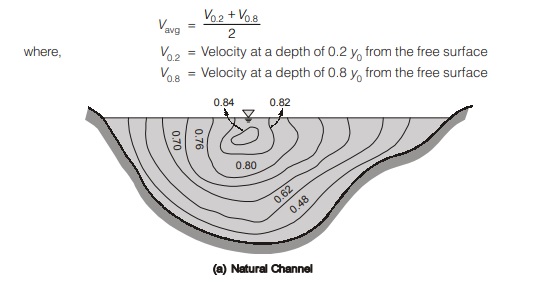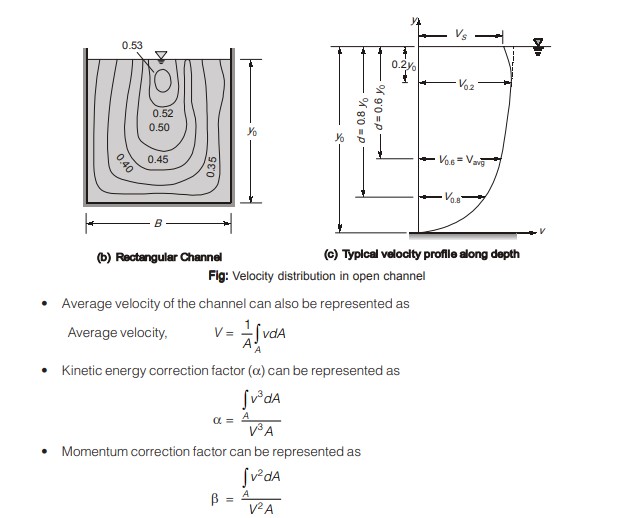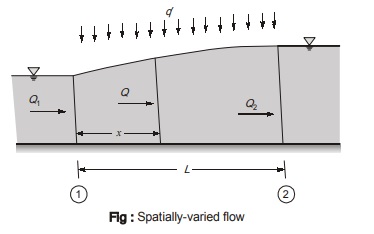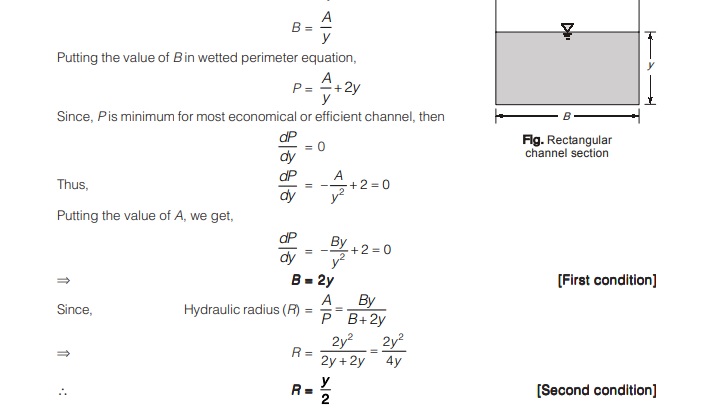Velocity Distribution
- In an open channel, velocity across any section is not constant. It is zero at the channel boundary and maximum at certain depth below the surface due to the production of secondary current which is a function of aspect ratio (d/B).
- The contours of equal velocity are called Isovels.
- The dip of the maximum velocity point depends on aspect ratio (depth to width) of the channel.
- For a deep narrow channel, the location of maximum velocity point will be much lower than the wider channel with the same depth.
- For rivers and canals, average velocity attains at a depth of 0.6 y0 below the free surface, where, y0 is the depth of flow.
- Also, average velocity can be represented as (two-point problem)


 NOTE:
The presence of corners and boundaries in open channel causes the velocity vectors of flow to have components not only in longitudinal and lateral direction but also in normal direction of flow.
NOTE:
The presence of corners and boundaries in open channel causes the velocity vectors of flow to have components not only in longitudinal and lateral direction but also in normal direction of flow.
For Steady Flow
The continuity equation for steady flow can be expressed asQ = A1V1 = A2V2
For Spatially varied Steady Flow
- In a steady spatially-varied flow, the discharge at various section will not be the same. A budgeting of inflows and outflows of a reach is necessary.
- Consider an SVF with linearly increasing discharge at the rate of q¢ per unit length.
Q = Q1 + q´ x
Q2 = Q1 + q´ L
Q2 = Q + q´ (L – x)


Rectangular Channel Section
Consider a rectangular channel section of width (B) and depth of flow (y) , thusWetted Perimeter, P = B + 2y Area of the flow, A = By
 For most economical rectangular channel,
For most economical rectangular channel,
(a) A = 2y2 (b) T = 2y (c) P = 4y (d) R = y/2 (e) D = y
<< Previous | Next >>
Must Read: What is Open Channel Flow?
WhatsApp Group
Join Now
Telegram Group
Join Now

